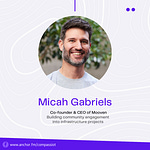Sean is a co-founder of Zephr.xyz Inc. with a background in computational simulation and modeling for geospatial phenomena. Previously he was an Engineering Manager at Snap working on mapping and visual positioning systems (VPS). Before Snap he was the CEO of Pixel8earth a crowdsourced VPS system for AR.
Prior to Pixel8earth he was the Head of Technical Product Management at Maxar helping build GBDX and next generation machine learning tools for satellite imagery. Subsequently he was a founder of Timbr.io - a platform for enabling algorithm reusability and more accessible data science - acquired by Maxar in 2016. Before starting Timbr.io he was a founder of GeoIQ - a collaborative data and analytics company. GeoIQ was acquired by ESRI where Sean worked as a director of strategy. Sean has also previously worked in academia, serving as a research professor at George Mason University.
Sean received his PhD from George Mason University as the Provost's High Potential Research Candidate, Fisher Prize winner and an INFORMS Dissertation Prize recipient.
What you’ll learn:
What is GNSS?
How is GNSS positioning important to the wide scale adoption of augmented reality?
What are some of the most challenging scenarios when it comes to GNSS-enabled technology
Address potential concerns about privacy and data security in a system that relies on user devices.
projecting 5-10 years into the future of urban mobility
Quotes
"Positioning is going to become an increasingly critical part of our world. If GNSS writ large failed, it would have a $1 billion per day economic impact."
"GNSS has become the linchpin for so many autonomous systems, creating both massive societal benefits and potential critical infrastructure risks."
"The future of urban mobility will be more autonomous, more electric, and more shared."
"Augmented reality systems rely heavily on precise positioning, often integrating GPS with visual positioning systems for accuracy."
"In areas where GNSS signals are degraded, like cities with tall buildings, we see the most dramatic benefits from our technology."
"We're focused on making sure your location is the most accurate it can be, while respecting privacy and not storing any personal data."
Links:
Connect:
Connect with Emily via email: emily@compassiot.com.au
Connect with Byte Size via LinkedIn
Connect with Compass IoT (the producer of this podcast) via our website















Share this post